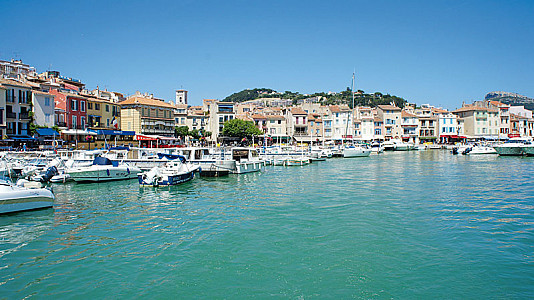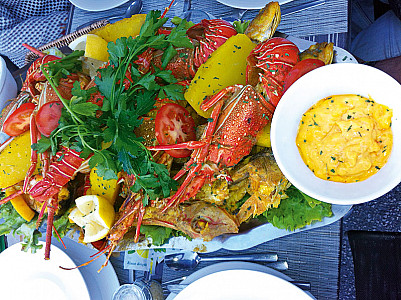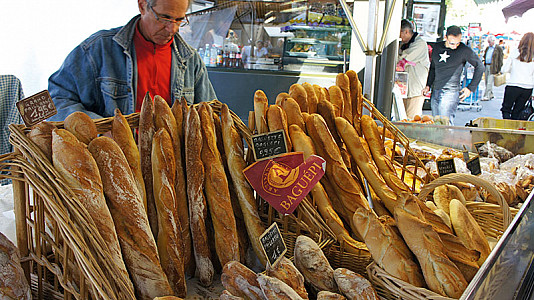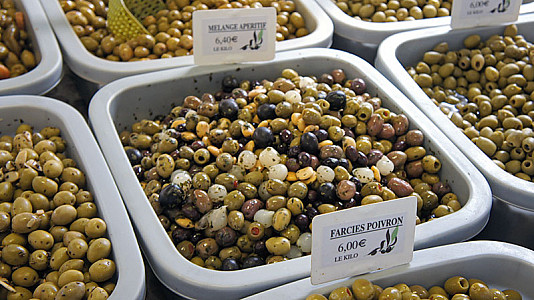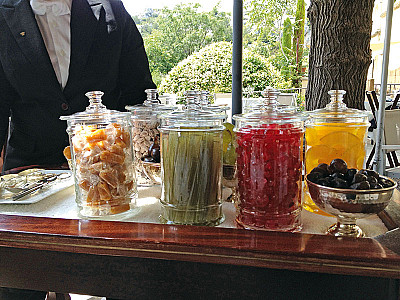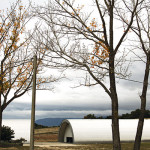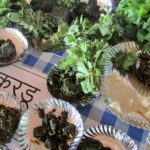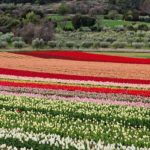Feasting on Provence
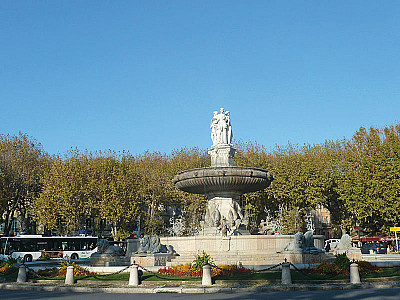
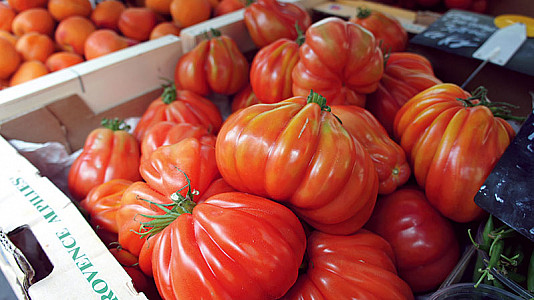
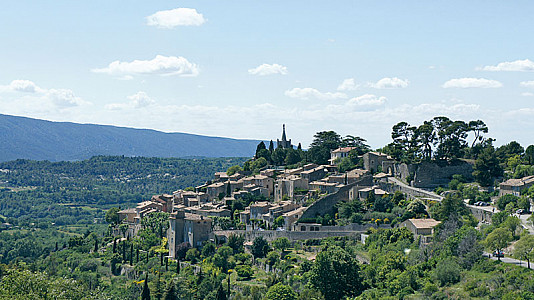
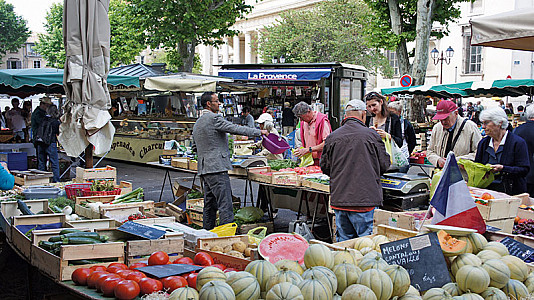
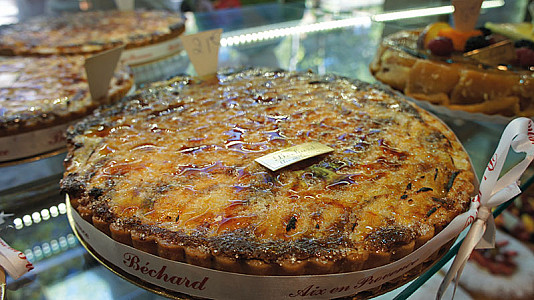
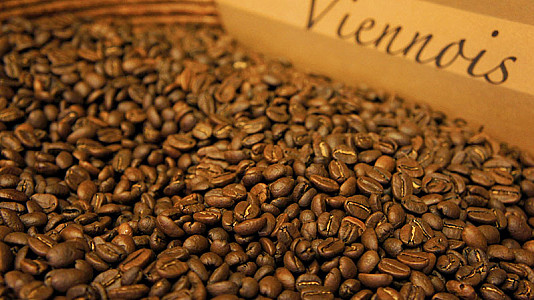
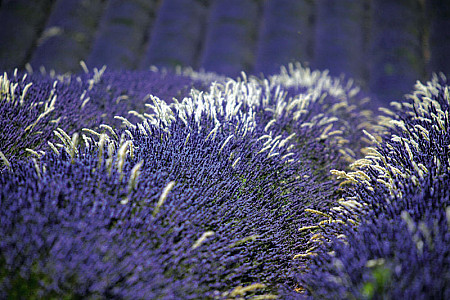
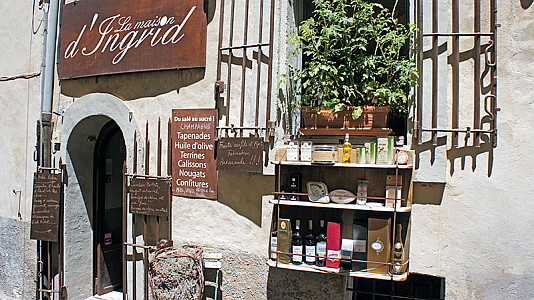
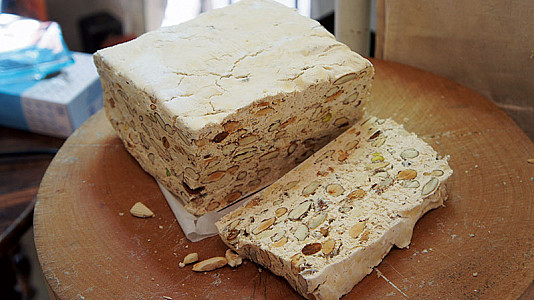
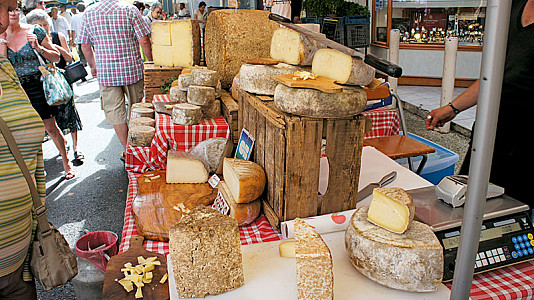
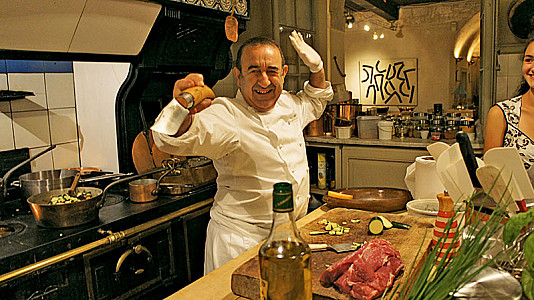
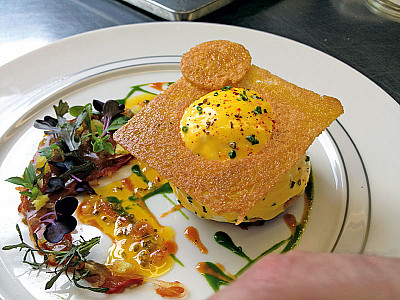
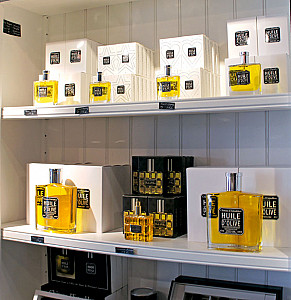
It is the light that fascinates! And suddenly all those paintings that I had mooned over in city museums all over the world, neatly gain new perspective. For Provence, that crisp and fertile bowl of nature’s bounty in the south of France, has indeed inspired artists like Cézanne (Aix-en-Provence) and Van Gogh (Arles) to put on canvas sublime perspectives inspired by that singular light which slants today on plane trees, lavender plants and beds of herbs, here in Aix-en-Provence. I sit at my little wooden desk painted a pale green, against a curtain of fresh blossoms on Provencal textile and look out on a lush and blooming garden landscape outside the villa that is home for a few days. This is the start of my Provencal diary and I am as yet unaware of the fresh and fabulous flavours that are indeed in store for me.
A bit of background…. Southern France is steeped in natural beauty and history. The first settlers, the Greeks and the Romans shaped the history, architecture, culture, agriculture of the region for centuries. The landscape is dotted with perilously perched hilltop villages, ancient Roman ruins, undulating fields of blue and purple lavender, fields of sunflowers, vineyards and olive groves. The cities and towns resonate with beauty, culture and fine foods. A diversity of landscapes ranges from the alluring coastal beaches and cliffs to the fresh hinterland and the mountains. There is something for everyone here, from the seeker of sights and moments of history to the sporty who may wish to hike, ski or sail. We, in our turn, are single-minded in our search for the flavours of Provence. With gourmet tours catching up in favour with the travellers of the world, my family has discovered its perfect fit….
Day 1
We land in the port city of Marseilles, France’s oldest city, pick up our car rental (a Volvo large enough for family and luggage) and drive 20 minutes down to Aix-en-Provence, the historic capital of Provence nicknamed ‘Little Verseilles’ in the 18th century in recognition of its magnificent architecture. We discover a picturesque town replete with stone mansions, wide avenues, winding lanes and fountains. It is love at first sight! Arriving in the evening, we check into Le Clos des frères Gris, a heavenly ivy-clad bed and breakfast place, being met by the American owner, Caroline Lecomte, a mine of information on the area, and her French husband Hubert. Our room is large and the light pours in through curtains that reflect the colours of Provence with a double bed covered by the prints that characterise this region and a typical quilt that again represents the area’s colourful handicrafts. Dinner that night is at Mitch, a popular local restaurant that serves Mediterranean food and which, like most of the eateries that we visit in the next few days has a limited menu based on what’s fresh on that day. Provencal cuisine is extensively based on fruits and vegetables that grow profusely in the area. The produce of the land is excellent and it takes just a hint of garlic, a dribble of olive oil and some fragrant herbs from the hillsides to make sublime dishes. All this is washed down by the region’s wonderful Coteaux d’Aix en Provence AOC wines, mainly a light cool rosé enjoyed by 80 per cent of the populace during the summer.
It rains that evening and there is some lightning as well but we climb up from the plane-tree-lined Le Cours Mirabeau, the beautiful central avenue of Aix-en-Provence that links the Mazarin quarter to the south with the old commercial town to the north. The Mazarin quarter with its chequered pattern was designed by the 17th century Archbishop Mazarin and gradually became the area where the Aix aristocracy chose to live. We enjoy the freshness of the evening, dreaming of another time when horse-drawn coaches traversed the Cours after it was created in 1649.
Day 2
We meet with Jennifer Dugdale of Gourmet Walking Tours near the Place de la Rotonde and its monumental fountain at the end of Le Cours Mirabeau, for a tasting tour of the area. Standing beside the fantastical carousel that seems to be a trademark of towns in the area, she fills us in on Aix history. In a snapshot: the Romans first built an army outpost here, discovered a natural water spring and built a settlement. (We are more interested in the fact that the surrounding area is so fertile that hikers crush naturally growing herbs underfoot even as they walk, releasing the fine aromas.)
Aix has been called The City of Fountains, due to the natural water. We walk past the elegant mansions built for the nobility (hotels particuliers) from the 17th and 18th centuries. The Cours is lined with shops, cafes and three fountains that add to its charm. La Fontaine D’eau Chaude, The Hot Water Fountain or the mossy fountain is the only one that is fed by the original hot spring. Shaped like a large rock, the fountain is covered with moss and the water, Jennifer tells us, steams up on cold winter days. We walk past and through Le Passage Agard, a former Carmelite Convent through which the nuns entered this once-restricted area where the nobles led lives of bored licentiousness. And through this passage we wend our way to the market square beyond.
A selection of local crafts including quilts, straw baskets, bright printed linen, Moroccan crockery greet us but we hurry past to the farmer’s market. A stall displays spices including pretty blue tins of salt particular to the area, mixed herbs, natural vanilla pods, fragrant and fresh; stalls of olives from different areas (Aix has been considered the ‘olive capital’ since the 18th century and its olive oil has now been awarded an AOC label); salted cod to be had on a Friday night with aioli, a mayonnaise-like preparation signature to the region; rotisserie chicken on a large spit; paella in a giant pan next to a cauldron of large squid stuffed with fish. We taste some local sausage and some awesome bright red cherries from Mont Ventoux that burst with juice. Golden apricots compete for size with enormous heirloom tomatoes. Some out of season cepes, morels shaped like trumpets and other mushrooms line a corner table. On another are heaped the iconic vegetables of Provence, aubergines and peppers, which, along with tomatoes, form the key ingredients of ratatouille, the ubiquitous summer vegetable stew.
We move on to the inner courtyard to the permanent market and meet the lavender lady with her kind old face and ready smile, a former school professor who today runs her lavender business while in her early 80s. I get some sachets of the sweet smelling herb and then we take a break at the local coffee roastery where beans are roasting and then cooling. I choose an Italian coffee with a tiny dollop of cream and find it wonderful. My son tries the hot chocolate, another specialty of the place, served in a shot glass and quite delicious, he claims.
Onward to the fromagerie where the aroma of fresh artisanal cheeses hits the right notes even as we enter. Huge wheels of hard mountain cheeses are ranged to one side while the strong French cheeses are on the other. A large bowl of crème fraiche beckons. On the right, a counter of smaller fresh cheeses cries out to be tried. We taste some fresh goat and sheep cheese with a bit of bread and discover them both delicious.
That afternoon, we wonder around the cobbled streets of the old town and its souvenir shops laden with lavender sachets and olive oil soap. We walk in the footsteps of Cézanne who was born in the town and gleaned inspiration from it. We visit L’Atelier de Cézanne (Cézanne’s Studio) which is a cottage in a verdant garden which the ‘father of modern painting’ had built in 1901. Now a museum, it displays the furniture and objects used by the artist in his still-life paintings. We sit in the garden enjoying the evening even as the museum gates are shut and we are eased gently into the night. I understand perfectly Cézanne’s words on Provence: ‘When you’re born there, it’s hopeless….. Nothing else is good enough’.
This is the life, I decide….
Day 3
We drive north from Aix in our Volvo in search of Provencal flavours. We keep off the main highways and choose instead the Route Vin which is picturesque and lined, of course, with vineyards. We could stop at any of these for a wine tasting but do not since we have a full schedule ahead. Our first stop is Lourmarin, a picturesque village with tiny streets crowded in by same-toned houses and lovely little boutique stores selling summer dresses, scarves, hats and beaded jewellery. We of course deign only to enter La Maison d’Ingrid, an epicerie fine that sells, what else, fine food. Ingrid, it turns out, is an ex-chef and extremely gregarious. We discover here the caviar des Pyrenes (French ‘grown’ caviar) and the family overindulges with a high-priced tiny tin that we proceed to demolish. Cliffs of nougat laced with honey and almonds, bottles of pesto, large bottles of Crystal and Roderer champagne, local wines, confit de lavande a jam of the lavender that covers the area and sel Provencal the salt that is sprinkled on poultry and fish. Here’s a veritable treasure trove of goodies and soon we walk out laden with some. Ingrid now points us to a restaurant on the square and we proceed to have what we had planned to be a light meal. We realise that this is not to be when the large platters of food arrive – a pizza laden with local ham and olives, raw beef with loads of chips, a Provencal salad replete with anchovies, olives, boiled eggs, fresh tomatoes and herbs and a risotto laden with cepes, the local mushroom bursting with flavour.
We debate now about taking a detour suggested by Ingrid to a famous ice-cream shop in a neighbouring town, but decide against it and off we go to Bonnieux, an amazing village built on the slopes of a hill and cascading upward to the old church. The narrow lanes through stone walls and homes are lined with antique shops, art galleries and boutiques. A bread museum beckons but we decide instead to sit outside a shop that sells homemade ice-cream and enjoy a view of the vineyards and the ‘new’ church that is built further down the slope. The ice-cream in Provence is scrumptious wherever we go and it is not surprising that I learn that the stringent chef courses of four years offered in France, include ice cream making as an art.
On to Goult where we do a turn of the village’s narrow lanes but do not stop and then to Roussillon to witness the red cliffs and the half hour cliff walk. Roussillon is located in the heart of the world’s biggest vein of ochre and the village reflects the ochre walls and colours of these cliffs. Take a walk in the Sentire des Ocres and discover the history of the ancient factory and the expertise of the colours at the Conservatoire des Ocres et Pigments Appliqués. We are too tired at this point to roam the interesting streets but as we walk back to the car, I notice posters announcing meals of the local salt cod and aioli the local ‘mayonnaise’ that I have not managed to taste or find anywhere. That is probably because making aioli traditionally requires doing it by hand in a mortar and pestle, carefully and with great loving care. It has to be made fresh and restaurants probably find it too troublesome. A pity, though I do manage to find some later.
That evening at Chez Feraud, we try some local fare. I enjoy a ‘pistou’ soup replete with fresh flavours of herbs and beans. Pistou is a pesto made with the unique Provencal basil. The homemade duck terrin is not technically Provencal but tastes chunky and flavourful. The fried small fish prove to be a heap of amazing crunchiness and if you do not actually look at those tiny eyes, they made an amazing starter. My adventurous son decides on a local specialty that not many tourists try, pieds et paquets Marseilles, an offal and trotter stew cooked with the white wine of Marseilles. The loin of pork with rosemary is served with cooked summer vegetables and velvety mash. Other local specialties include grilled chitterling sausage, grilled salt cod with fennel, asparagus salad with dried cod stew. We top it all up with some soft chevre (goat) cheese and hunks of baguette, a creamy crunchy crème brulee and profiteroles with ice-cream, chocolate sauce and cream…. Perfect, in any language!
Day 4
Thursday! Market day in Aix-en-Provence and the family is on the run. As is it seems, half of this town’s population. The Cours Mirabeau is partly set up with stalls of garments, tablecloths, bed linen, pottery, shoes…. I turn my nose in the direction of the food market for that’s what we are here for. I buy a local pink and blue straw shopping basket for our tasty wares. A quick dash to the foie gras shop for a hunk, to the fromagerie for some delicious brie with truffles, a soft goat cheese rolled in ash and a round cow cheese as well as some of the hard mountain cheese, all with unpronounceable names. Then a quick dash to the boulanger for some bread, crusty on the outside, pillow soft on the inside. The market stalls are shutting for the day but we run for some tepanade replete with the flavours of olives and anchovies in olive oil. The large casks of flavoured pods of garlic, a favourite entrée, have already been emptied this morning. But we manage to get some black olives treated in the old way with salt, somewhat shrunken-looking due to the brine.
We pile our already growing heap of goodies with a typically Provencal dish, salted cod, desalted in water and lightly cooked, with boiled potatoes and other vegetables and some aioli. (delicious!) Some hard salami and sausage are added as well as pink ham streaked with veins of herbs. A quick run back through the textile market to the famous Patisserie Béchard, where the town’s richest woman (or so we are told), grey haired and elegant sits behind the till as she apparently has done for decades, looking after her family business and presiding over a fantastical array of cakes, tarts, preserved fruit, ice-cream cakes, calissons (almond paste candies wrapped in rice paper formerly distributed to the faithful during major religious ceremonies and first created for a king’s feast).
Laden with far too many goodies, we carry our basket to the verdant garden bench under a spreading tree of the villa where we are staying. We spread the food and pour the cool rosé into plastic cups as tiny insects dance around and petals from the trees above decorate our hair and plates. If there is bliss, then this is it I decide – family, food and that particular fragrance that is the essence and taste of Provence.
Day 5
Today, we are on the bouillabaisse trail. This Provencal fish soup or stew is particularly well known in Marseilles but we bypass the big city vibe and settle on Cassis, a seaside resort where cafes and ice-cream stalls line the horseshoe shaped bay, pretty as a picture. My husband and I settle on a cool bench and finish the remnants of our cheese and pâté with fresh baguette while watching a game of boules in the local square. My boys dive into a local seafood restaurant and wade through heaps of mussels and lobster washed down with cool rosé. With fish stew on our mind, we choose a restaurant, Dom Camillo, make a booking and then wait impatiently for the time of consumption.
I insist on a boat ride to the calanques, hidden along the coast, a must-witness. Sheer white cliffs rise out of the blue waters of the Mediterranean, as we putter our way into unexpected coves and inlets, tiny beaches and cliff-side walks. I enjoy the fresh cool sea breeze that counters the hot streaming sun. The cliffs are white, the water a startling blue and the sky just a shade lighter.
Not time for bouillabaisse yet, we discover and so we set off in our trusty Volvo on the Routes des Cretes, a cliffhanging drive that has us squealing in our seats, over the edges of sharp cliffs that make for a splendorous panorama of island, coast, mountain and the deep-deep sky. To the town of La Ciotat we drive and back to the highway to double back to Cassis and the main event.
Sitting along the bay at Cassis at an outdoor table with the sky slowly turning colours, is akin to being in a multicolour dream. The bouillabaisse makes for ritualistic eating. First the tureen of steaming soup is ladled into our white bowls. The crisp toast is then covered with a mayonnaise-like sauce. Dunk into soup, sprinkle with some grated cheese that goes stringy in the hot liquid and crunch in. An enormous platter is now placed in front of us with a variety of seafood including langoustine and Mediterranean rock fish and huge halves of potatoes cooked to perfect softness in the broth laced with saffron. We tear into heads, eyes, spines and tails with gusto, the flesh sweet and fresh, falling off the bone and tender on the tongue. It is a feast of fish caught that very day and brought straight to the table.
Late in the evening, the cliffs that we had braved earlier, look afire, their red facades glowing in the darkening sky. And as the sun sinks slowly, the red turns to a luscious pink and we argue about whether the colour is reminiscent of a steak cooked to medium rare perfection or just a half minute more. Our young server, a smile fixed on his face, asks us the question that has been on the tip of his tongue all evening…where are you from? And when we tell him, his smile broadens into a grimace and he cries, “Bollywood, I love Bollywood!” in heavy French-accented English and he breaks into a Bollywood jig, there and then, against the Mediterranean sky, his head and neck rolling with his hips. It cannot get better than this, I decide.
Day 6
We drive to Saint Remy de Provence, north from Aix-en-Provence, for the next few days of our Provencal adventure. Having accepted the fact of a blown boiler and no hot water and having settled into the rustic and pretty Mas de Cornud, we set off to explore the area around this charming town laden with specialty shops stocking everything from A-grade olive oil to handmade calissons. Off to Les Baux-de-Provence, on a spur of the Alpilles (bau in Provencal means escarpment), with views across the Camargue. The most dramatic fortress site in Provence, it has nearly 2 million visitors a year. The pedestrianised town has a car park near the Porte Mage gate. When the lords of Baux built their fine citadel here in the 10th century, they claimed one of the three wise men, Balthazar as an ancestor and took the star of Bethlehem as their emblem.
The citadel ruins lie on the heights of the escarpment and can be visited. The medieval village of Les Baux winds improbably through narrow alleys laden with souvenir shops and restaurants, museums and churches. Just outside of Les Baux, in the heart of the Alpilles, is the Carrieres de Lumieres, a sound and light show created in an abandoned quarry. Images of works by Gauguin and Van Gogh, the ‘Painters of Colour’, are projected onto the immense 14-metre-high walls, pillars and flooring of the quarry, taking you on a coordinated musical and visual journey through the world of these two painters. Quite an experience!
Day 7
Amazing lunch at Mas de L’Amarine in Saint Remy. The modern décor and profusion of colour inside and outside make you feel cheery. The kidney-shaped bright coloured tables, huge umbrellas, friendly service, young chef, are all charm. The food is excellent – foie gras in a glass bottle with crisp toast, oven-roasted first fresh figs, onion compote and a fruit compote. Home-made and utterly delicious. The vegetable tart is a bouquet of fresh flavours while the crayfish starter is delicate to taste. A huge chunk of monkfish for the main course is mouthwatering while the entrecote is bloody and delicious. The pièce de résistance is the shoulder of lamb, layered with herbs, slow-cooked for 11 hours with a bouquet of herbs and potatoes done to an aromatic softness and served with mushrooms and grilled baby tomatoes just off the vine. Divine!
Full to the brim, we traverse the now hot countryside to the town of Arles, known for its Gallo-Roman monuments and sites painted by Van Gogh. The tourist sites in Arles bear the stamp of their Roman past and are within comfortable walking distance of the central Place de la Republique. The highlight is Les Arenes, one of the largest, best preserved of the Roman monuments in Provence. Behind this is the Theatre Antique. Once a fortress, its stones were later used for other buildings. Nearby, the Eglise Saint Trophime is a fine example of Romanesque beauty in its cloisters.
Day 8
We end our delicious Provencal trip with a lunch to remember at the exclusive Oustau de Baumarine in the heart of Les Alpilles mountains. Lunch is on an elegant terrace, under giant umbrellas that dim the bright sunlight without keeping out the welcome warmth. The air is balmy, the food excellent. Earlier, we had taken part in a cooking class in the large and airy hotel kitchen. We had tasted our handiwork (fish starter, signature eggs and pigeon) with gusto but were ready for lunch, after a chat (see box) with the chef de cuisine, Sylvestre Wahid, a French chef of Pakistani origin. The hotel owner Jean-Andre Charial, we discover, has visited Goa several times as also Kerala and Pondicherry. He loves India, he states simply.
The meal is beyond expectation; French cuisine with a tantalising hint of spice. A fresh salad to start is followed by Saint Pierre de Mediterranee, a masterpiece of a dish beautifully arranged with seafood with a pesto d herbes, and the culinary star, the l’agneau de l’Aveyron, en croute, a wonderful saddle of lamb enfolded in dreamy pastry and served with great ceremony. To end it all, a mascarpone, praline and strawberry confection that is good enough to dive into, with a ceremonial candle atop, as it is my son’s birthday….
A holiday to remember and one that my heart and gut feel bound to return to – again and again
The Theatre at Orange
There is more to Provence than markets and food. The area is steeped in historic sites, most of them built by the Romans. Sathya Saran visits one such and discovers herself entranced
One of the biggest surprises of Provencal France is the theatre that stands in the town of Orange. The theatre, built by Augustus Caesar in perhaps 33 BC, was inspired by the Greek theatres and has seen epochs pass, while it stands defying man and time, to win for itself the protection of UNESCO as a world heritage monument.
Culturespaces, an organisation responsible for the administration of historical monuments and museums, ensures that every visitor to the site, is treated to a complete version of the history and wonder of the monument; the audio guide given free of charge is both comprehensive and enthrallingly recorded.
Nothing prepares one for the vastness that opens up behind the high wall that one sees at arriving at the site. In fact the wall is the back of the stage, and on the inside there are intricate stone work and nooks and cranies, both for setting up statues and for more theatrical reasons is revealed. The stage, 61 metres long and 13 metres wide, recreated of wood, is as close to the original as was possible, and the 33 levels of stone steps have been rebuilt, where required, to almost original exactness. Of course the centuries, with changing patterns of occupation in the town, have left their mark.
At one point the inside of the theatre served as a refuge from religious wars, and was occupied by the townspeople. A prison took the place of the dwellings in the 18th century. The strong, thick walls had many uses. What could not be damaged however was the wonderful system of acoustics. Even today, the perfect height of the amphitheatre steps that corresponds with the height of the stage wall ensures that a voice down below reaches in exact pitch and resonance to those seated high above.
The Roman theatre of Orange takes almost two hours to be explored in its entirety; its historical complexity is hidden in the seemingly open simpleness of the structure.
One of three such remaining theatres built in the Roman era, the Roman theatre of Orange is the best preserved, and a living witness to history’s changing kaleidoscope. Today, it draws artistes from all over the world, and crowds of fans too, who flock to enact a scene that time first set up centuries ago: a stage with moving actors and voices raised in dialogue and song, and an audience sitting enthralled as they watch, listen and marvel.
Wines of Provence
Provence has been a wine growing land from the time that the Greeks first planted vines in the 5th century BC. Today, the area produces red, white and rosé wines and has become a hub for wine tourists. Through coastal areas, past hilltop towns and historical sites, the Provencal terroir stretches from Mediterranean shores to the foothills of the Alps and the countryside around Aix to the inland areas of Nice. Take The Wine Route spanning the area’s top three AOCs – Côtes de Provence, Coteaux Varois en Provence and Coteaux d’Aix-en-Provence. From the ancient mansion houses of Aix-en-Provence, to Sainte-Victoire mountain portrayed by Cézanne and the Roman amphitheatre of Fréjus, the wine routes are dotted with exciting visits and tasting opportunities.
Provence is especially known for its Cotes de Provence wines and especially its rosé wines, drunk well-chilled through the hot summer. The fruity rosé wines are synonymous with simplicity and spontaneous pleasure and represent a new and more casual approach to appreciating wine. These ‘fuss-free’ wines pair perfectly with gastronomic as well as casual cuisine.
Lavender Fields
This year the lavender was late blooming but normally from June to September, the inland countryside of Provence offers up fields of purple and blue lavender. The main lavender growing area stretches from the Sault Plateau to Buech in the foothills of the Alps. Lined with medieval houses and Renaissance homes, the village of Sault in Lower Provence is a Mecca of lavender growing with surrounding meadows covered with a carpet of purple as far as the eye can see. Lavender is also one of the riches of the Apt area and no visit is complete here without tasting Apt’s best-ever candied fruit. You may also shop for beauty products made with lavender or other fragrant and beneficial plants by L’Occitane, which hosts free guided tours of its factory and museum in Manosque.
GASTRONOMIC PERFORMER
Gourmet tours being the order of the day, Provence is indeed in the forefront of offering diverse experiences pertaining to the enjoyment of food. We discovered one such example of gastronomic theatre at the historic Hotel La Mirande, a five-star palace in the ‘City of the Popes’, Avignon. Reserved to partake of the Table d’hôtes or Chef’s Table, we discovered ourselves at a large block wood table seating 14, in the authentic 19th century kitchen dominated with an original wood stove that had been fired three hours before the event. What followed was an evening of fun and laughter as our chef-on-the-spot, Jean-Claude Altmayer, a jovial soul to say the least, cooked up fresh mushroom soup, beef with haricots verts and apricot parfait with liquorice, as he fenced with his kitchen knife, sang French nursery rhymes and generally entertained.
While in Avignon, visit the Pont Benezet bridge or the Pont d’Avignon which inspired the nursery rhyme. Visit also the impressive Popes’ Palace spanning 37 acres. Take time out to visit the Bottle Room housed in an ancient artillery room in the palace, to taste some world-renowned Chateauneuf-du-Pape and Cotes du Rhone wines. You may buy from an excellent choice of wines here at producer prices.
A Touch of Spice
In the heart of Les Alpilles mountains, minutes away from the beautiful town of Saint Remy de Provence, Genevieve and Jean-Andre Charial have turned the Ousteau de Baumaniere into a unique gastronomic destination. Their chef in charge of the haute kitchen? A suave, good-looking, young man of Pakistani origin who speaks English with a heavy French accent…
Chef de cuisine, Sylvestre Wahid, speaks to Shirin Mehta about adding spice to French cuisine
How did you get here, as chef of one of the area’s finest restaurants?
I was born in Pakistan but I grew up in the South of France in a little town called Nimes. I travelled a lot since I was 16 years old. I worked in New York City, Manhattan, for Mr (Alain)Ducasse – for 12 years in Paris and New York. After five years, I decided to quit New York to come back to France. I had no idea what I was going to do and hoped to find a nice place, a nice restaurant to have a good combination of everything, of life, of work…to be happy…. My best friend knew of restaurants here and suggested that Beaumaniere was trying to find a new chef. He took an appointment with the owner who in the beginning thought it was a joke. I was young of course, only 30 years old….
How did you acquire a love for French food?
My mom cooks a lot of Indian and Pakistani food which is so much the same you know….the spirit of food is very important in my family, eating is very important…. So I grew up in this philosophy. In France my father worked for the French army and took care of the hotel and restaurant business for the officers but he did not cook…. I would visit him in his kitchen, in his office and school being very hard here for me, I decided to become a cook. My mum cried when I told her I wanted to be a cook. In Pakistan or India, it is not a high level job. But I wanted to be the best cook in France. Today, she is very proud of me.
What is your cuisine like?
My kitchen is Mediterranean and French. I choose the best produce I can find in France and I like to use some spice. I never use single spices but mix them up – lemongrass, orange, lime, ginger, added to French cooking. The new spirit of French cooking is not heavy cooking. Everyone wants light food but with a lot of taste. I work also with French classical food like the traditional French appetiser, the eggs that we made. But I make it very light, very smooth. I work on small details to make it tastier and lighter. My signature dishes I would say, are the eggs, the red snapper and the squab. I have been here seven years now. I have another restaurant I look after in the wintertime so I am fully booked all year. This restaurant is open from March to October and only one week in December….
Related posts from Verve:
Verve Trending
Sorry. No data so far.
us on Facebook to stay updated with the latest trends

